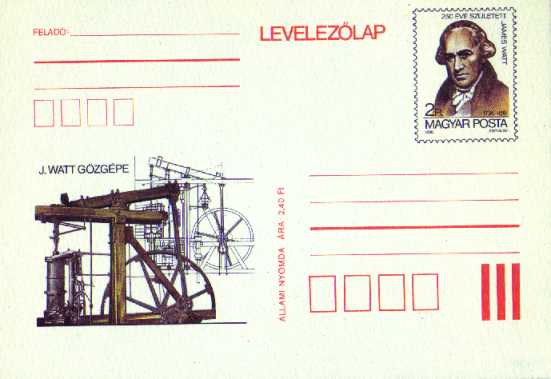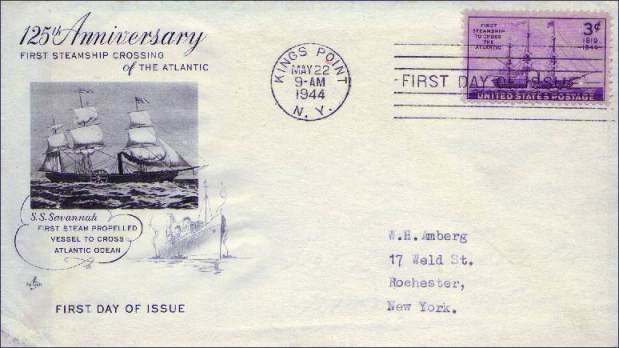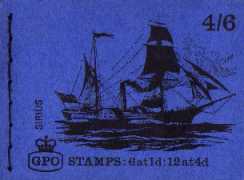|
1. Early developments in transatlantic shipping

The steam engine, invented in 1710 by Newcomen and improved by James Watt, was first used to pump water out of the English mines. Later also other aplications were found, such as propulsion of trains and ships.

The first real steamship probably was the PYROSCAPHE, built in 1783 by the French marquis Jouffroy d’Abbans. He sailed with her on the Saône near Lyon.
 | When - in the first part of the 19th century - a reasonably reliable steam engine and paddle wheel construction were developed, steam ferry services were established on the inland waterways. In case of engine breakdown, and to save on expensive coal when the wind was favourable, the ships still frequently had sails. |

The SAVANNAH was the first steamship to cross the Atlantic. Not as a passenger service, but because the ship was sold. Of the total journey of 29 days she sailed under steam for only 85 hours.
More impressive were the crossings of the Curaçao, the first steamship of the Dutch navy. Between 1827 and 1829 she sailed (with passengers) three times from Hellevoetsluis, the Netherlands, to Surinam - most of the time under steam.
In 1833, the Canadian ROYAL WILLIAM sailed from Canada to England to be sold. Every four days the salt had to be removed from the boilers. She was sold to the Spanish navy as YSABELLA SEGUNDA.
 | Further developments made it possible to cross the Atlantic under continuous steam power. Several companies were established for a regular service between Europe and America. The SIRIUS sailed for the British and American Steamship Company. She left England in 1838 five days before the GREAT WESTERN of the competitive Great Western Steamship Company but arrived only five hours before her in New York. |


|